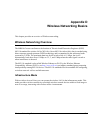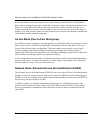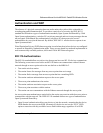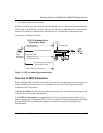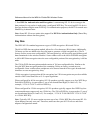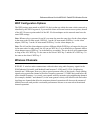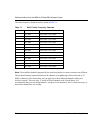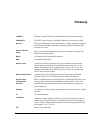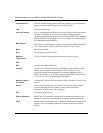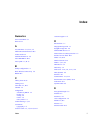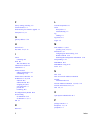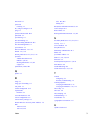
Reference Manual for the MR814v2 Cable/DSL Wireless Router
2 Glossary
Internet Protocol
The main internetworking protocol used in the Internet. Used in conjunction
with the Transfer Control Protocol (TCP) to form TCP/IP.
LAN
See local area network.
local area network
LAN. A communications network serving users within a limited area, such as
one floor of a building. A LAN typically connects multiple personal
computers and shared network devices such as storage and printers. Although
many technologies exist to implement a LAN, Ethernet is the most common
for connecting personal computers.
MAC address
Media Access Control address. A unique 48-bit hardware address assigned to
every Ethernet node. Usually written in the form 01:23:45:67:89:ab.
Mbps
Megabits per second.
MTU
See Maximum Transmission Unit.
Maximum
Transmission
Unit
The size in bytes of the largest packet that can be sent or received.
NAT
See Network Address Translation.
netmask
A number that explains which part of an IP address comprises the network
address and which part is the host address on that network. It can be
expressed in dotted-decimal notation or as a number appended to the IP
address. For example, a 28-bit mask starting from the MSB can be shown as
255.255.255.192 or as /28 appended to the IP address.
Network Address
Translation
A technique by which several hosts share a single IP address for access to the
Internet.
packet
A block of information sent over a network. A packet typically contains a
source and destination network address, some protocol and length
information, a block of data, and a checksum.
PPP
See Point-to-Point Protocol.
PPP over Ethernet
PPPoE. PPP over Ethernet is a protocol for connecting remote hosts to the
Internet over an always-on connection by simulating a dial-up connection.
PPTP
Point-to-Point Tunneling Protocol. A method for establishing a virtual private
network (VPN) by embedding Microsoft’s network protocol into Internet
packets.



